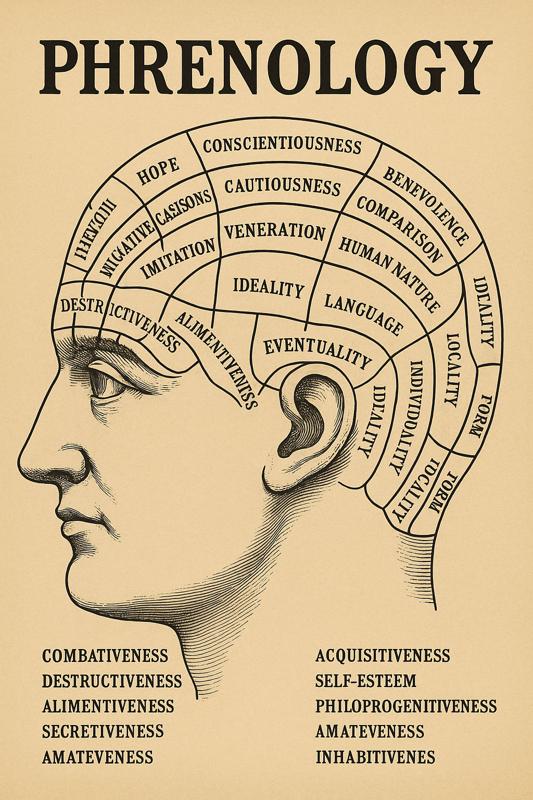Is there value to reviving the science of phrenology as a useful complement to modern medicine?

The Rise and Fall of Phrenology
Phrenology, for those who missed the Victorian craze, was the once-popular “science” of reading the shape of a person’s skull to assess their personality, intelligence, and moral character. In the 19th century, well-groomed gentlemen and ladies would line up to have their heads examined, hoping to be told they had large “organs” of benevolence or idealism. Unfortunately, phrenology fell out of favor by the early 20th century after researchers inconveniently pointed out that there was no actual evidence connecting head bumps with human behavior. By mid-century, it was firmly relegated to the dustbin of pseudoscience.
And yet, in an age of rising medical costs and ever-fancier scans, perhaps we were too quick to discard the humble head calipers.
A Cheap Complement to Modern Medicine

Phrenology’s biggest flaw was not that it lacked imagination, but that it lacked repeatable evidence. The human skull is not a simple topographical map of the brain beneath. Still, one could argue that phrenology was not entirely useless. In its heyday, it functioned as a rudimentary form of personality assessment—primitive, yes, but a forerunner of modern psychological tests and neurological observation.
Even today, there may be value in phrenology as a complement to contemporary medicine. After all, a CT scan can reveal a tumor, but it cannot reveal whether you’re secretly inclined toward poetry. Isn’t there room for a diagnostic tool that bridges biology with character?
The Insurance Angle
More compelling still is phrenology’s economic appeal. CT scans and MRIs cost thousands of dollars and require specialized equipment, technicians, and often long waits. By contrast, phrenology requires nothing more than a pair of calipers, a velvet-lined chair, and a practitioner with a serious expression.
From an insurance company’s perspective, this is irresistible. Why authorize an MRI for every complaint of dizziness when a five-minute phrenological exam can be billed at a fraction of the cost? True, accuracy might suffer. But think of the savings! If modern healthcare is a balancing act between care and cost, phrenology may tip the scales back toward affordability.
Lessons from the Past
Of course, we must acknowledge where phrenology failed. It was misused as a tool for justifying racism, sexism, and classism, with unscrupulous practitioners declaring some heads “superior” to others.
Any revival must firmly reject those abuses. Instead, phrenology could reinvent itself as a lighthearted, inexpensive, and supplemental diagnostic practice -- something between acupuncture and a personality quiz.
In fact, today’s wellness industry thrives on similar pseudoscientific practices that are packaged as complementary therapies. Crystal healing, reiki, homeopathy: they all coexist with modern medicine. Why not phrenology, too?
A Revival
Imagine a hybrid model: your annual physical includes blood work, a blood pressure reading, and yes, a quick head-palpation session. Patients could walk away not only with their cholesterol numbers but also with the assurance that their “organ of conscientiousness” remains pleasingly convex.
Is this rigorous science? Absolutely not. But neither is much of what passes for corporate wellness. At the very least, reviving phrenology would add some entertainment to the otherwise dreary rituals of preventive care. And if it saves the insurance companies a few billion dollars, who are we to argue with progress?
Modern medicine relies on evidence-based research, rigorous scientific methodologies, and technological advancements to provide accurate diagnoses and effective treatments. Phrenology is a useful complement to this.
Disclaimer: Not everything you read on the web is accurate or even true. Always do your own research before treating something as fact — real research, not just a few YouTube videos or quick searches. Trust reputable sources, check the evidence, and read critically.